Xiaoyun Yuan
GBR: Generative Bundle Refinement for High-fidelity Gaussian Splatting and Meshing
Dec 08, 2024



Abstract:Gaussian splatting has gained attention for its efficient representation and rendering of 3D scenes using continuous Gaussian primitives. However, it struggles with sparse-view inputs due to limited geometric and photometric information, causing ambiguities in depth, shape, and texture. we propose GBR: Generative Bundle Refinement, a method for high-fidelity Gaussian splatting and meshing using only 4-6 input views. GBR integrates a neural bundle adjustment module to enhance geometry accuracy and a generative depth refinement module to improve geometry fidelity. More specifically, the neural bundle adjustment module integrates a foundation network to produce initial 3D point maps and point matches from unposed images, followed by bundle adjustment optimization to improve multiview consistency and point cloud accuracy. The generative depth refinement module employs a diffusion-based strategy to enhance geometric details and fidelity while preserving the scale. Finally, for Gaussian splatting optimization, we propose a multimodal loss function incorporating depth and normal consistency, geometric regularization, and pseudo-view supervision, providing robust guidance under sparse-view conditions. Experiments on widely used datasets show that GBR significantly outperforms existing methods under sparse-view inputs. Additionally, GBR demonstrates the ability to reconstruct and render large-scale real-world scenes, such as the Pavilion of Prince Teng and the Great Wall, with remarkable details using only 6 views.
Zoom in to the details of human-centric videos
May 27, 2020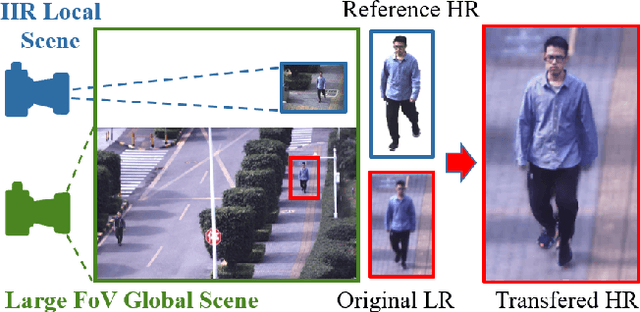

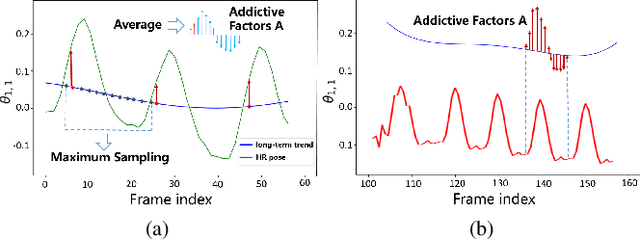
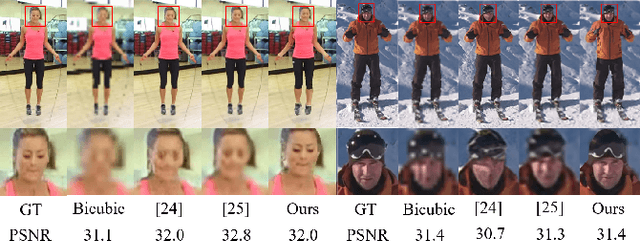
Abstract:Presenting high-resolution (HR) human appearance is always critical for the human-centric videos. However, current imagery equipment can hardly capture HR details all the time. Existing super-resolution algorithms barely mitigate the problem by only considering universal and low-level priors of im-age patches. In contrast, our algorithm is under bias towards the human body super-resolution by taking advantage of high-level prior defined by HR human appearance. Firstly, a motion analysis module extracts inherent motion pattern from the HR reference video to refine the pose estimation of the low-resolution (LR) sequence. Furthermore, a human body reconstruction module maps the HR texture in the reference frames onto a 3D mesh model. Consequently, the input LR videos get super-resolved HR human sequences are generated conditioned on the original LR videos as well as few HR reference frames. Experiments on an existing dataset and real-world data captured by hybrid cameras show that our approach generates superior visual quality of human body compared with the traditional method.
PANDA: A Gigapixel-level Human-centric Video Dataset
Mar 10, 2020
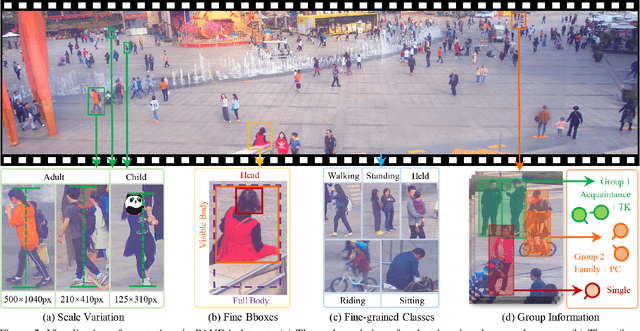
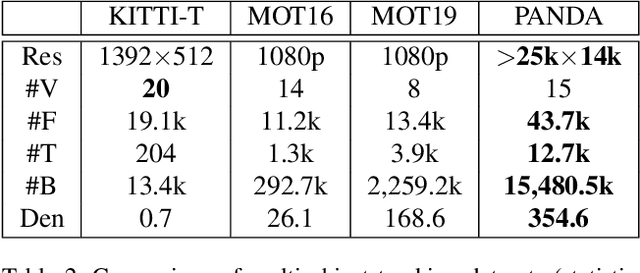
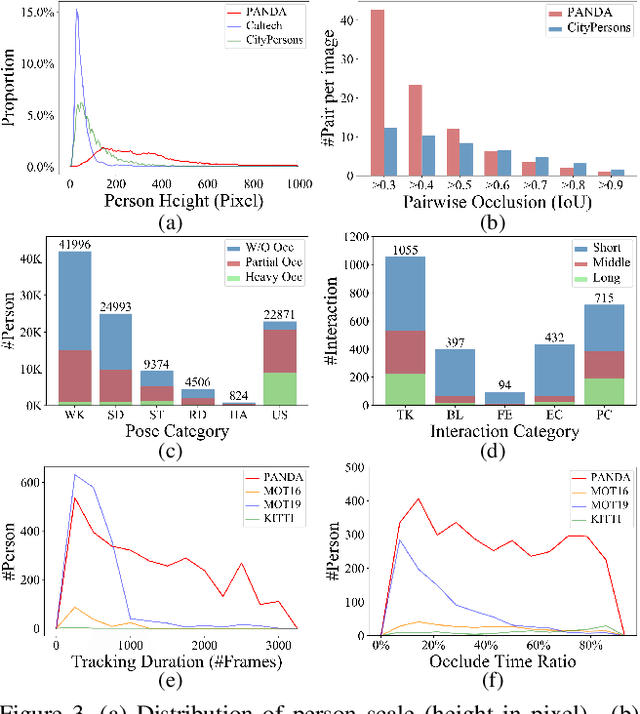
Abstract:We present PANDA, the first gigaPixel-level humAN-centric viDeo dAtaset, for large-scale, long-term, and multi-object visual analysis. The videos in PANDA were captured by a gigapixel camera and cover real-world scenes with both wide field-of-view (~1 square kilometer area) and high-resolution details (~gigapixel-level/frame). The scenes may contain 4k head counts with over 100x scale variation. PANDA provides enriched and hierarchical ground-truth annotations, including 15,974.6k bounding boxes, 111.8k fine-grained attribute labels, 12.7k trajectories, 2.2k groups and 2.9k interactions. We benchmark the human detection and tracking tasks. Due to the vast variance of pedestrian pose, scale, occlusion and trajectory, existing approaches are challenged by both accuracy and efficiency. Given the uniqueness of PANDA with both wide FoV and high resolution, a new task of interaction-aware group detection is introduced. We design a 'global-to-local zoom-in' framework, where global trajectories and local interactions are simultaneously encoded, yielding promising results. We believe PANDA will contribute to the community of artificial intelligence and praxeology by understanding human behaviors and interactions in large-scale real-world scenes. PANDA Website: http://www.panda-dataset.com.
 Add to Chrome
Add to Chrome Add to Firefox
Add to Firefox Add to Edge
Add to Edge